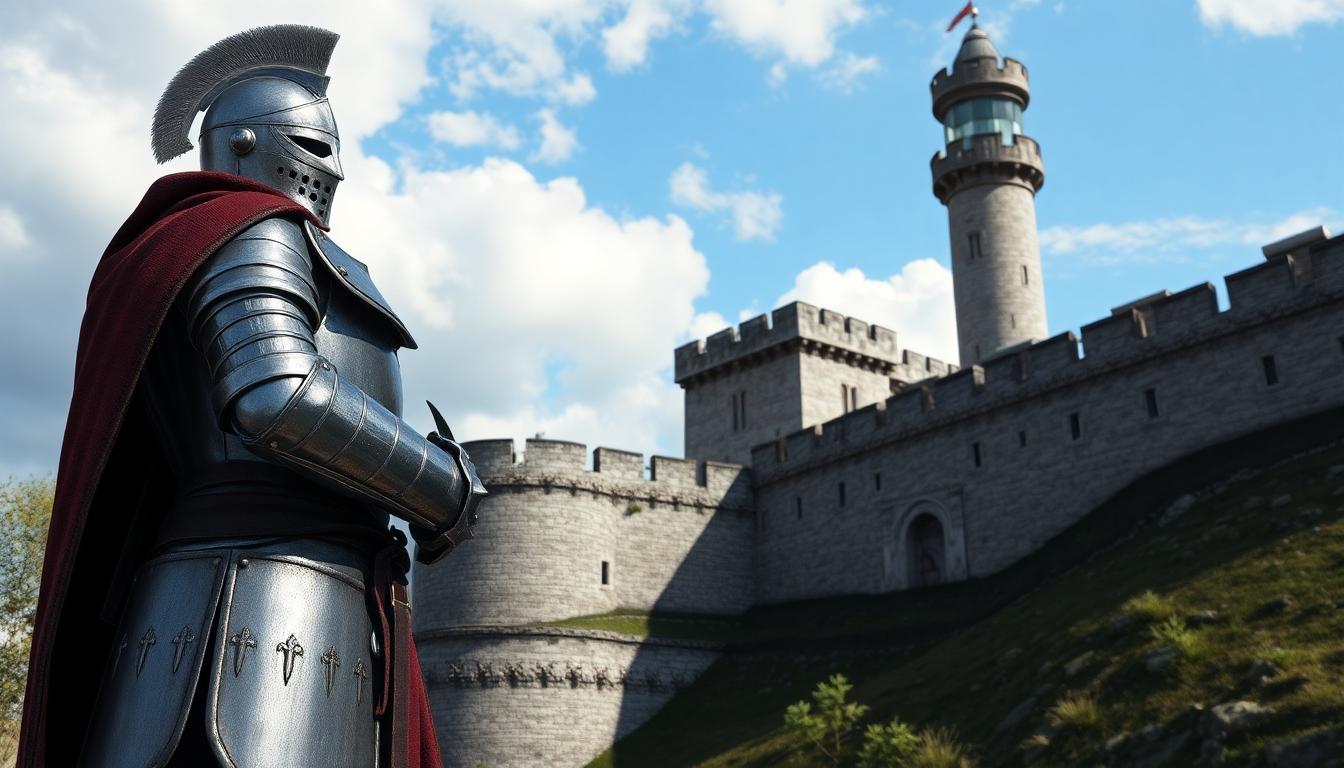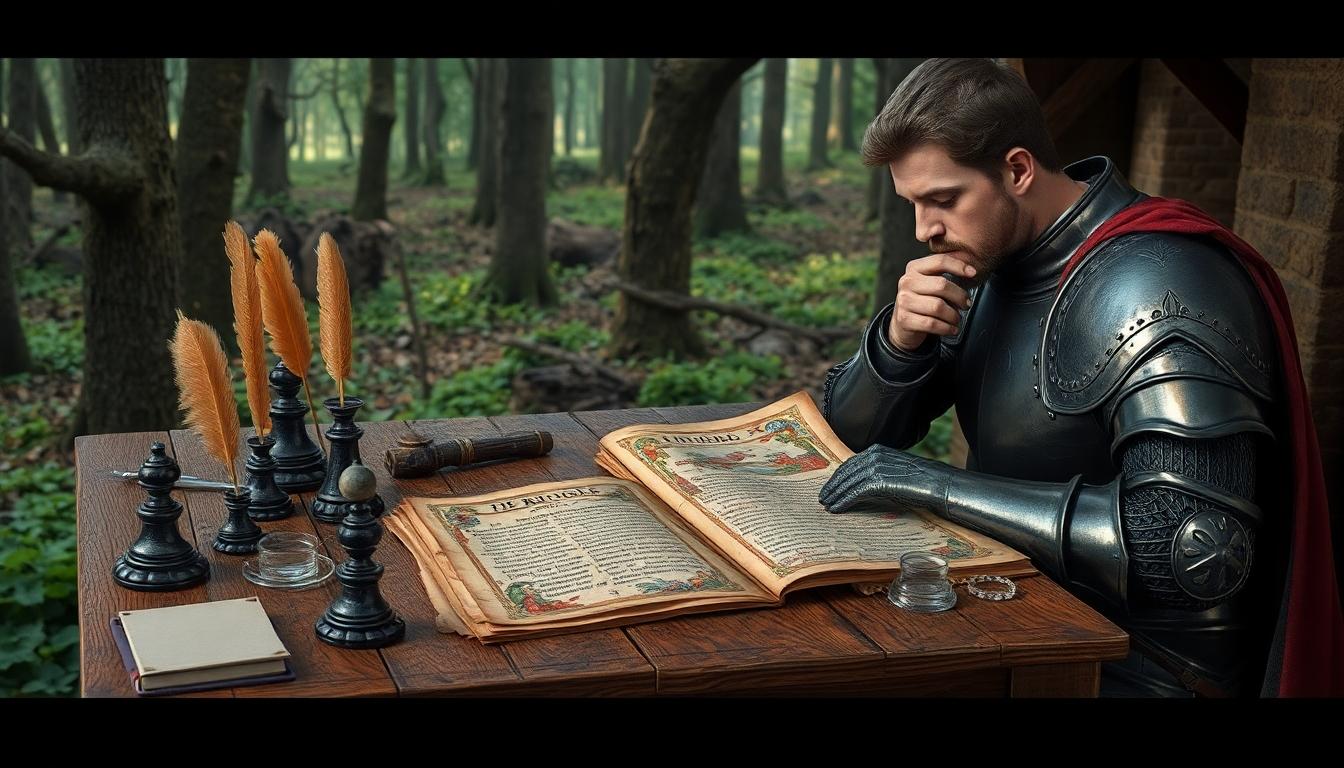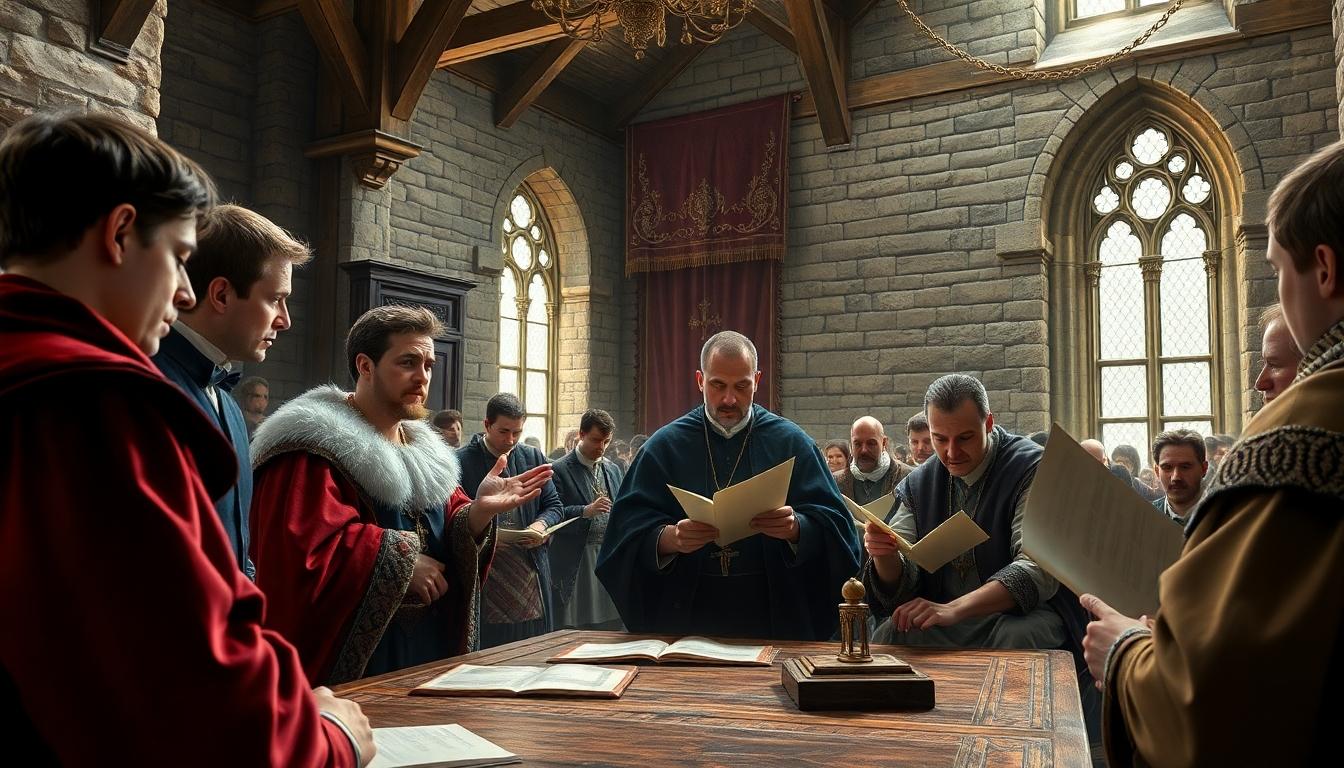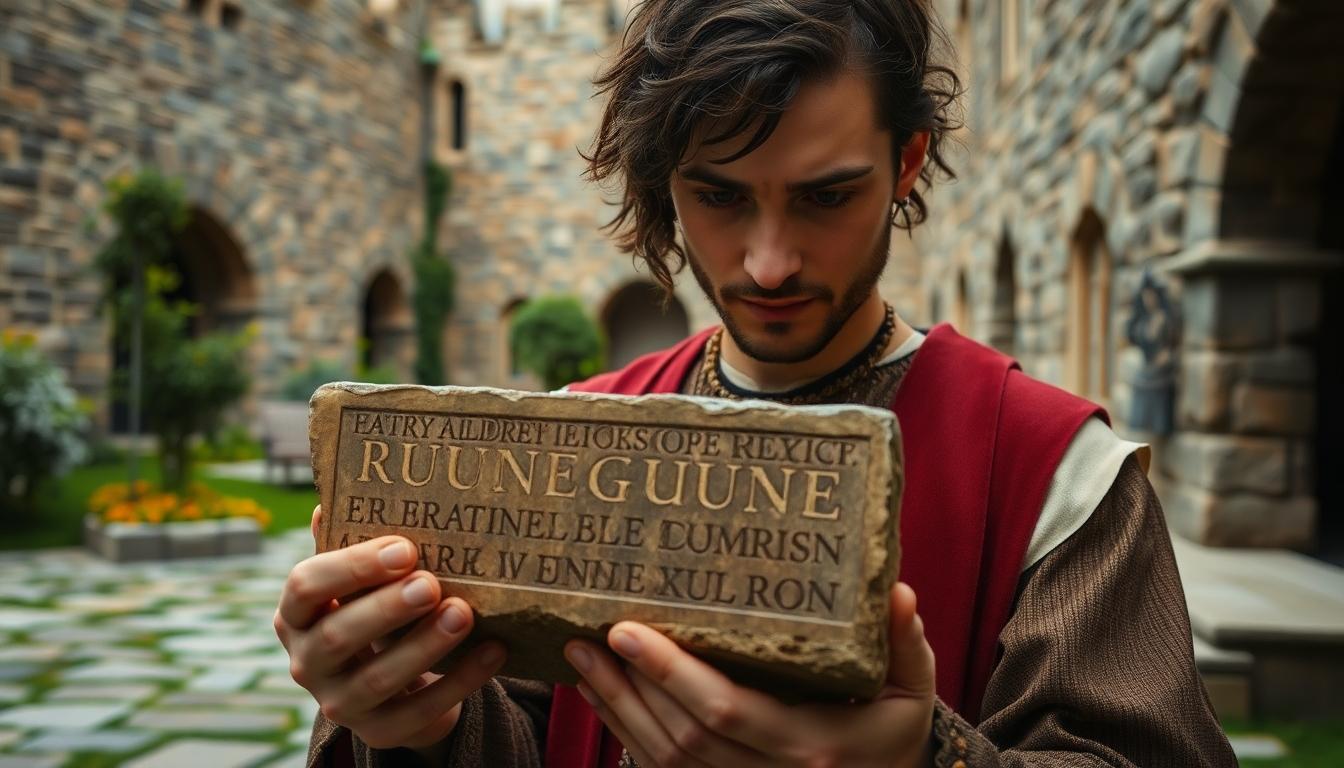Step back in time with us as we explore the intriguing area of medieval riddles—clever puzzles that entertained kings and commoners alike during the Middle Ages. These enigmatic brain teasers weren’t just for amusement; they served as important cultural tools for education, socialization, and even theological discussion.
We’ve uncovered some of the most intriguing medieval riddles that have survived through centuries of history. From the riddles found in ancient manuscripts like the Exeter Book to the puzzling questions posed in royal courts, these mental challenges reveal much about the medieval mind and its values. Ready to test your wit against the clever wordplay of our ancestors? Let’s jump into these historical conundrums that continue to perplex and delight modern puzzle enthusiasts.
Riddles in Manuscripts: Where Medieval Brain Teasers Were Preserved
Medieval riddles didn’t survive by chance—they were carefully preserved in manuscripts that scholars and monasteries maintained throughout the centuries. These valuable collections give us a window into the intellectual pastimes of our ancestors.
The Exeter Book: Treasury of Anglo-Saxon Riddles
The Exeter Book stands as the most important source of Old English riddles, containing approximately 95 enigmatic puzzles that date back to the 10th century. Donated to Exeter Cathedral by Bishop Leofric in 1072, this remarkable manuscript survived fires, neglect, and even use as a cutting board over its thousand-year history. Many riddles in this collection feature double meanings with suggestive overtones that reveal medieval humor was far less prudish than commonly assumed. Objects like shields, storms, and everyday items speak in first-person narratives, challenging listeners to guess their identity through clever wordplay. The famous “I saw a creature” riddle series showcases the Anglo-Saxons’ poetic approach to puzzles, blending natural imagery with sophisticated linguistic techniques that still intrigue modern scholars.
Symphosius and the Latin Riddle Tradition
Symphosius, a 4th or 5th-century Latin poet, created the blueprint for medieval riddle collections with his “Aenigmata”—100 three-line puzzles that shaped riddle tradition for centuries. His concise format proved immensely popular, inspiring countless medieval authors to imitate and expand upon his work. Monastery scriptoria faithfully copied these Latin riddles as educational tools for teaching grammar, vocabulary, and critical thinking to novice monks. Aldhelm of Malmesbury, an Anglo-Saxon scholar, composed his own collection of 100 Latin riddles around 695 CE, deliberately making them more complex than Symphosius’ originals to challenge advanced students. Latin riddle manuscripts traveled throughout Europe, creating a shared intellectual tradition that transcended language barriers while providing entertaining mental exercises for educated readers. Notable collections like the Bern Riddles and Eusebius’ enigmas demonstrate how this form evolved from simple word puzzles to sophisticated literary compositions that reflected medieval philosophical concepts.
10 Challenging Medieval Riddles That Still Confuse Modern Minds

Medieval riddles served as intellectual entertainment and required deep understanding of nature, technology, and societal norms of their time. These clever puzzles continue to challenge modern thinkers with their unique perspectives and unexpected answers. We’ve compiled ten of the most intriguing medieval riddles that have stood the test of time:
- The Lighthouse Riddle
“Where ocean pounds the craggy cliffs in sky and surging surf is rising with the tide, a scaffold built my mighty structure high So I could point out sea-routes like a guide.”
Answer: Lighthouse
- The Mysterious Birth
“Spawned without seed, produced in ways of wonder.”
Answer: Bee
- The Silent Guardian
“Guarding the medieval keep with all my might, my metal skin shines bright. No life, but still I stand, protecting castles across the land.”
Answer: Armor or shield
- The Water Child
“I’m born from water, yet I’m not a fish.”
Answer: Bubble
- The Concealed Being
“Before, when I was covered and dressed in my shell, Then I tasted nothing of food with my mouth, and I was unable to see.”
This riddle likely refers to an egg or a snail, showcasing how medieval minds observed natural phenomena.
- The Dual-Purpose Creature
“I who living ravage the land and after death serve the masses.”
This riddle possibly refers to cattle or sheep, which were valued for both their living contributions and uses after death.
- The Mountain Breaker
“If I was living, I shattered mountains; if I was dead, I fettered the living.”
This complex riddle could describe an ox or bull, powerful in life and useful in death.
- The Night Illuminator
“A scaffold of light that shines in the night.”
Answer: Moon or Candle
- The Toothless Biter
“I have a sharp bite, yet no teeth.”
Answer: Dagger or other sharp weapon
- The Backward Protector
“I protect the front, yet I am held at the back.”
Answer: Shield
These riddles demonstrate the sophisticated thinking of medieval minds, combining observations of nature with human creations. Many answers reflect essential elements of medieval life, from agricultural tools to military equipment. The imagery used in these puzzles offers valuable insights into daily life during the Middle Ages, while challenging us to think beyond our modern perspectives.
Decoding Medieval Riddle Language: Double Meanings and Wordplay

Medieval riddles captivated audiences through their clever linguistic devices and elaborate wordplay. These puzzles weren’t merely entertainment but sophisticated linguistic constructions that revealed the medieval mind’s creativity and wit.
Double Entendre and Personification
Double entendre served as a fundamental technique in medieval riddle creation, deliberately using metaphorical language to disguise ordinary objects as something provocative or mystical. The Exeter Book contains many examples, including a famous riddle describing an onion as a “wonderful creature” desired by women, with suggestive imagery like “plunder my head” intentionally misleading solvers. Anglo-Saxon riddlers frequently employed personification, transforming everyday items into sentient beings with human characteristics and intentions. Fire, shields, and mead would speak in the first person, challenging listeners to decode their true identities through carefully crafted clues. This anthropomorphic approach created a playful disconnect between the literal description and the mundane solution, delighting medieval audiences with the revelation of the answer.
Kennings and Metaphorical Language
The use of kennings—compound poetic phrases—formed the backbone of Old English riddle tradition. These metaphorical expressions deliberately obscured meaning while creating vivid imagery that required lateral thinking to solve. A classic example from the Exeter Book describes fire as a “dumb creature” (referring to two sticks or stones) that “bites” without teeth. Medieval riddlers transformed ordinary objects through poetic language, calling swords “battle-lights” and ships “wave-steeds.” These descriptive compounds weren’t random but followed established poetic conventions familiar to Anglo-Saxon audiences. Solvers needed to reinterpret literal descriptions through a metaphorical lens, understanding that seemingly impossible descriptions pointed to common objects when properly decoded.
Religious Symbolism in Medieval Puzzles
Christian themes permeated many medieval riddles, reflecting the religious framework of medieval society. Latin-inspired compositions, like Aldhelm’s riddle about the lorica (breastplate), transformed physical objects into spiritual allegories about divine protection. The Exeter Book’s collection uniquely merges pagan and Christian motifs, reflecting the syncretism of Anglo-Saxon England during its conversion period. Riddles addressing creation, natural forces, or celestial bodies often contained subtle references to divine order and biblical themes. This religious dimension added layers of interpretive possibility, allowing the same riddle to function simultaneously as entertainment and spiritual contemplation. Monastic scholars particularly appreciated these multilayered puzzles that combined intellectual challenge with theological reflection.
Structural Techniques in Riddle Composition
Anglo-Saxon riddles adhered to distinctive structural patterns that enhanced their memorability and performance value. Rather than using rhyme, these compositions relied on alliterative verse with exact rhythmic patterns that marked them as part of an oral tradition. Many riddles concluded with a direct challenge to the audience—”say what I am called”—emphasizing their function as interactive performance pieces. The “neck riddle” subtype (which later influenced works like Tolkien’s “The Hobbit”) originated in medieval tradition, featuring seemingly impossible questions that subverted audience expectations. The sophisticated structural techniques of these riddles reflect a highly developed literary tradition preserved in manuscripts like the 10th-century Exeter Book and the 8th-century Leiden Riddle, which demonstrate both vernacular creativity and Latin influences.
The Social Function of Riddles in Medieval Society

Medieval riddles weren’t merely simple wordplay but served as powerful tools for social cohesion and intellectual development. These clever puzzles created bonds among community members while reinforcing cultural values and shared understanding.
Entertainment at Royal Courts
Riddles held a prestigious position in medieval royal courts, where the aristocracy embraced them as sophisticated literary entertainment. Anglo-Saxon riddles particularly flourished in early medieval England, becoming a cornerstone of the literary industry. Courtiers used these intellectual challenges to demonstrate their wit and creative thinking abilities, impressing monarchs and fellow nobles alike. The competitive solving of riddles at court created an atmosphere of intellectual stimulation, providing a refined form of amusement that reflected the cultural sophistication these elite circles sought to cultivate. Kings and queens often participated in these riddle exchanges, turning what might seem like simple wordplay to modern audiences into important social rituals that reinforced court hierarchies and showcased intellectual prowess.
Educational Tools in Monasteries
Monastery settings transformed riddles from mere games into powerful educational instruments that shaped medieval thinking. Monks utilized riddles to reinforce religious values and develop allegorical thinking skills among their students, making them essential components of medieval education. These puzzles helped novices understand complex theological concepts by drawing parallels between everyday objects and divine messages. Latin instruction benefited tremendously from riddle-solving exercises, as students simultaneously developed linguistic skills and analytical thinking abilities. Monastery teachers recognized that the captivating nature of riddles made difficult concepts more accessible and memorable, creating an effective learning environment where students eagerly absorbed religious doctrine and classical knowledge. The practice of solving riddles in these religious settings wasn’t considered frivolous but rather a serious intellectual exercise that prepared minds for deeper theological understanding.
How Medieval Riddles Influenced Modern Puzzle Culture

The Educational Legacy
Medieval riddles served as powerful teaching tools in their time, and their influence persists in modern educational approaches. Scholars like Aldhelm (c. 639–709) and Alcuin used these puzzles to teach Latin poetry, meter, and encyclopedic knowledge to their students. This approach cultivated interpretive skills and a sense of wonder that directly parallels modern inquiry-based learning techniques. Today’s educational games and puzzles follow this same principle of captivating students through intellectual challenges rather than rote memorization. The medieval practice of using riddles to develop critical thinking has evolved into comprehensive pedagogical methods that prioritize active problem-solving.
Literary Techniques That Shaped Modern Puzzles
The structural elements of medieval riddles provided a foundation for contemporary puzzle design. Old English riddles from the Exeter Book utilized alliterative verse, kennings, and layered metaphors to create captivating intellectual challenges. These riddles often personified everyday objects or natural phenomena, requiring solvers to think beyond literal interpretations. Modern word puzzles, crosswords, and lateral thinking challenges draw heavily from these techniques, particularly the medieval concept of “focus” – using implicit metaphors to guide readers toward answers. The sophisticated literary craftsmanship found in medieval riddles continues to inspire puzzle creators who aim to balance challenge with satisfaction.
Cultural Cross-Pollination
Medieval riddle traditions fostered a remarkable cultural exchange that mirrors today’s global puzzle community. The blending of vernacular and elite traditions created a shared intellectual identity across medieval Europe, with Latin riddles influencing Old English compositions and vice versa. We can see this legacy in contemporary puzzle culture, where formats and solving techniques cross cultural and linguistic boundaries. International puzzle competitions, multilingual riddle collections, and the global popularity of logic puzzles demonstrate how the medieval tradition of intellectual exchange continues to thrive in modern puzzle culture.
Digital and Interactive Adaptations
Medieval riddles have found new life in digital formats that preserve their intellectual essence while embracing technological possibilities. Modern adaptations include Twine-based digital games and interactive literary riddles that directly draw from medieval models. These contemporary versions maintain the playful yet didactic nature of their historical predecessors while offering new ways to engage with puzzle-solving. Escape rooms, another modern puzzle phenomenon, echo the collaborative problem-solving aspects of medieval riddle traditions, where communities would often work together to unravel particularly challenging conundrums.
The Enduring Appeal of Intellectual Play
The fundamental appeal of medieval riddles – transforming language and creating moments of revelation – remains at the heart of modern puzzle culture. These ancient puzzles established enduring frameworks for intellectual engagement by bridging oral traditions and literary craftsmanship. Today’s puzzle enthusiasts experience the same satisfaction medieval listeners felt when solving a clever riddle. The combination of challenge, creativity, and intellectual reward that characterized medieval riddles continues to drive puzzle innovation and popularity across various formats and platforms, cementing these ancient word games as foundational elements of our intellectual heritage.
Solving Techniques: How to Approach a Medieval Riddle

Medieval riddles present unique challenges that require exact techniques to unravel their mysteries. We’ve compiled essential strategies to help you tackle these historical brain teasers with confidence.
Decode the Metaphorical Language
Metaphors form the backbone of medieval riddle construction. Many riddles cleverly anthropomorphize objects, giving human characteristics to inanimate things. For example, when you encounter a riddle describing something that’s “sharp and can split stone,” you’re likely dealing with an axe rather than a person. The key is identifying which descriptions are literal and which are figurative, separating surface meanings from symbolic ones.
Look for Runic Clues
Some Exeter Book riddles incorporate runic elements that provide critical hints toward the solution. These ancient alphabetic characters often hold special significance beyond their phonetic value. When deciphering riddles with runes, try converting them to Latin letters to uncover hidden words. Remember that runic characters could vary in meaning, adding another layer of complexity to your solving process.
Recognize Intentional Misdirection
Medieval riddlers were masters of ambiguous phrasing designed to lead solvers astray. Terms like “eyes” might actually refer to needle holes, while “mouth” could describe a well’s opening. Anticipate this clever wordplay by questioning the literal interpretation of body parts and other descriptive elements within the riddle text.
Apply Cultural Context
Answers to medieval riddles frequently relate to everyday medieval life, including armor, weapons, and messenger pigeons. Understanding the cultural backdrop of medieval society dramatically improves your chances of solving these puzzles. Aldhelm’s riddles, for instance, often contrast natural elements with man-made objects, reflecting the medieval worldview and priorities.
Compare with Similar Texts
Examining parallel texts can provide valuable insights when you’re stuck. Many Old English riddles were influenced by Latin models, particularly those created by Aldhelm. Comparing versions and adaptations of similar riddles can highlight patterns and reveal potential answers that might otherwise remain obscure.
Navigate the Challenges
Solving medieval riddles comes with inherent difficulties worth noting. Multiple valid interpretations often exist for a single riddle, with some offering both astronomical and concrete object answers. Also, fragmentary evidence caused by manuscript erosion or transcription errors can obscure crucial clues, requiring educated guesswork based on context.
Practical Solving Strategy
For best results, we recommend a methodical approach to tackling medieval riddles:
- First, identify both literal and figurative terms in the riddle text
- Next, look for and decrypt any numeric or runic hints that might be present
- Finally, contextualize the clues within medieval tools, warfare, or daily activities
These linguistic puzzles remain fascinating tests of ingenuity, challenging modern solvers to navigate the same intricate web of metaphor, culture, and wordplay that entertained medieval audiences centuries ago.
The Enduring Legacy of Medieval Riddling Traditions
Medieval riddles stand as remarkable cultural artifacts that transcend their time. These clever puzzles reveal a industry where intellect and wit were valued across all social strata from monastery halls to royal courts.
We’ve seen how these enigmatic challenges functioned as more than mere entertainment – they were educational tools spiritual exercises and social bonds woven into the fabric of medieval life.
Today’s puzzle enthusiasts can find a kindred spirit in these ancient conundrums. As we continue to decode and appreciate these linguistic treasures we’re not just solving riddles – we’re connecting with our intellectual ancestors across centuries of human creativity.
The medieval riddling tradition reminds us that the joy of intellectual play has always been fundamental to human experience. Their legacy lives on in every puzzle that challenges us to think beyond the obvious.
Frequently Asked Questions
What is the Exeter Book and why is it important to medieval riddles?
The Exeter Book is a 10th-century manuscript containing approximately 95 Old English riddles. It represents one of the most significant collections of Anglo-Saxon literature and riddles that have survived to the present day. Despite enduring various adversities throughout history, this treasure preserves the sophisticated humor and intellectual traditions of medieval riddling, providing modern scholars with invaluable insights into Anglo-Saxon culture and literary practices.
Who was Symphosius and how did he influence medieval riddle traditions?
Symphosius was a Latin poet whose collection “Aenigmata” established a foundational riddle tradition that shaped medieval riddling for centuries. His concise, elegant riddles were widely used in monasteries as educational tools and inspired later medieval authors like Aldhelm of Malmesbury to create more complex collections. Symphosius’s work helped foster a shared intellectual tradition across Europe, elevating riddles from simple puzzles to sophisticated literary works.
What literary techniques were commonly used in medieval riddles?
Medieval riddles employed sophisticated techniques including double entendre, personification, and kennings (compound poetic phrases requiring lateral thinking). They featured alliterative verse, religious symbolism, and intentional misdirection to create layers of meaning. These devices made riddles intellectually challenging while reflecting the cultural and spiritual context of medieval society, demonstrating the sophisticated literary traditions of the time.
How were riddles used in medieval monasteries?
In monasteries, riddles served as powerful educational instruments that helped monks teach religious values and develop allegorical thinking skills among students. These puzzles made complex theological concepts more accessible and memorable, transforming riddle-solving into a serious intellectual exercise. By engaging with riddles, students prepared their minds for deeper understanding of spiritual texts and strengthened their analytical abilities.
What social function did riddles serve in medieval society?
Riddles functioned as tools for social cohesion and intellectual development in medieval communities. They created bonds among community members while reinforcing cultural values and knowledge. In royal courts, riddles were prestigious entertainment that showcased wit and creativity among the aristocracy. The competitive solving of these puzzles fostered intellectual stimulation and reinforced social hierarchies while providing entertainment across all social classes.
How have medieval riddles influenced modern puzzle culture?
Medieval riddles have significantly shaped contemporary puzzle design through their literary techniques like alliterative verse and layered metaphors. Their influence extends to modern educational approaches that prioritize active problem-solving. The cross-cultural tradition of riddling reflects a shared intellectual identity that persists in today’s global puzzle community. Digital adaptations have also emerged, maintaining the intellectual essence of medieval riddles while embracing new technologies.
What makes medieval riddles challenging for modern readers?
Medieval riddles challenge modern readers because they reflect a different worldview and cultural context. They often contain references to agricultural tools, religious concepts, and daily practices unfamiliar to contemporary audiences. The linguistic techniques—including metaphorical language, intentional misdirection, and allegorical meanings—require readers to think beyond literal interpretations and apply historical knowledge to fully appreciate and solve these ancient puzzles.
What strategies can help solve medieval riddles?
Effective strategies include decoding metaphorical language, recognizing intentional misdirection, and applying cultural context. A methodical approach involves identifying both literal and figurative terms, looking for runic clues, and contextualizing answers within medieval life. Consider multiple possible interpretations, as many riddles intentionally suggest inappropriate answers while actually referring to mundane objects. Understanding basic medieval technologies and religious concepts significantly improves solving success.
Why did medieval riddles often contain double meanings or suggestive content?
Medieval riddles frequently employed double entendre and suggestive content as clever misdirection techniques. These devices created humor while testing the solver’s ability to think beyond obvious (often inappropriate) interpretations toward more innocent solutions. This playful ambiguity reflected medieval society’s complex relationship with humor, intellect, and morality, challenging listeners to demonstrate discernment while providing entertainment that crossed social boundaries.
What types of subjects were commonly featured in medieval riddles?
Medieval riddles typically featured subjects from daily life: agricultural tools, weapons, animals, natural phenomena, and religious concepts. They often personified inanimate objects, giving voice to everything from plows to storms. Technology of the time—like armor, writing implements, and beehives—featured prominently. These practical subjects reflected the medieval worldview while transforming ordinary objects into extraordinary puzzles that revealed the sophisticated thinking behind seemingly simple medieval life.







